No results found
Our History
When some American run-away slaves fled to Upper Canada via the Underground Railroad system they settled in groups along the Grand River. The Black Settlement of Ontario began after the American Revolution when a group of free blacks, who fought alongside the British, journeyed to Canada, with other settling Loyalists.
The East Ward area of Brantford was home to early Black settlers. Those who belonged to the African Methodist Episcopal Church formed the Society of Coloured Methodists, and as early as 1834, they worshipped in private homes.
A map by Lewis Burwell from 1830 indicates that the first “African” Church was located at the northeast corner of the intersection of Dalhousie and Peel Streets. This early church served the Black community for more than 20 years.
Our current building stands at 165 Murray Street was completed in 1896 and replaced a frame building that was erected on the site in 1856. The lands were donated for that purpose by Peter S. O’Banyan and his wife Sophia. This property, including the S.R. Drake Memorial Church, is associated with the Underground Railroad and is municipally designated under Part IV (4) of the Ontario Heritage Act.
East Ward was home to early Black settlers in Brantford. A map by Lewis Burwell from 1830 indicates that the first “African” Church was located at the northeast corner of the intersection of Dalhousie and Peel Streets. This early church served the Black community for more than 20 years.
In 1856, the denomination changed its name from “African” to “British” to give its place of worship a greater Canadian identity. The new name also protected the congregation from fear of being recaptured by American slave owners or their bounty hunters. In 1956, in honour of the Centennial of the Canadian British Methodist Episcopal Church, the Brantford church was named S.R. Drake Memorial, in honour of the Revered S.R. Drake, who was the pastor from 1902 until 1909. Rev. Drake was responsible for the incorporation of the British Methodist Episcopal Church in 1913.
Our church building (S. R. Drake Memorial Church) was built with elements characteristic of the Loyalist style. The original church, a simple frame building, was constructed for temporary use. It was replaced, in 1896, by the current yellow-brick building. The church is box-like and the gabled roof is steeply pitched. The round top windows on the upper level have rock-faced brick voussoirs, which are mirrored by a small rectangular two over two sash window, on the lower level. A date stone exists on the Murray Street facade indicating the church's founding of 1856, as well as the church's construction in 1896.
Source: City of Brantford By-law 188-85.
CHARACTER-DEFINING ELEMENTS
Character-defining elements that contribute to the heritage value of the S.R. Drake Memorial Church include its:
- exterior facades
- round-top windows with rock-faced brick voussoirs
- rectangular two over two sash windows on lower level
- round-top transom over the front double doors with rock-faced brick voussoirs
- small arched window and date stone above the entrance doors
- front gabled roofline
Source: City of Brantford By-law 188-85.
Right-click on the images below to open a new tab to see full image.



Article from Civil War
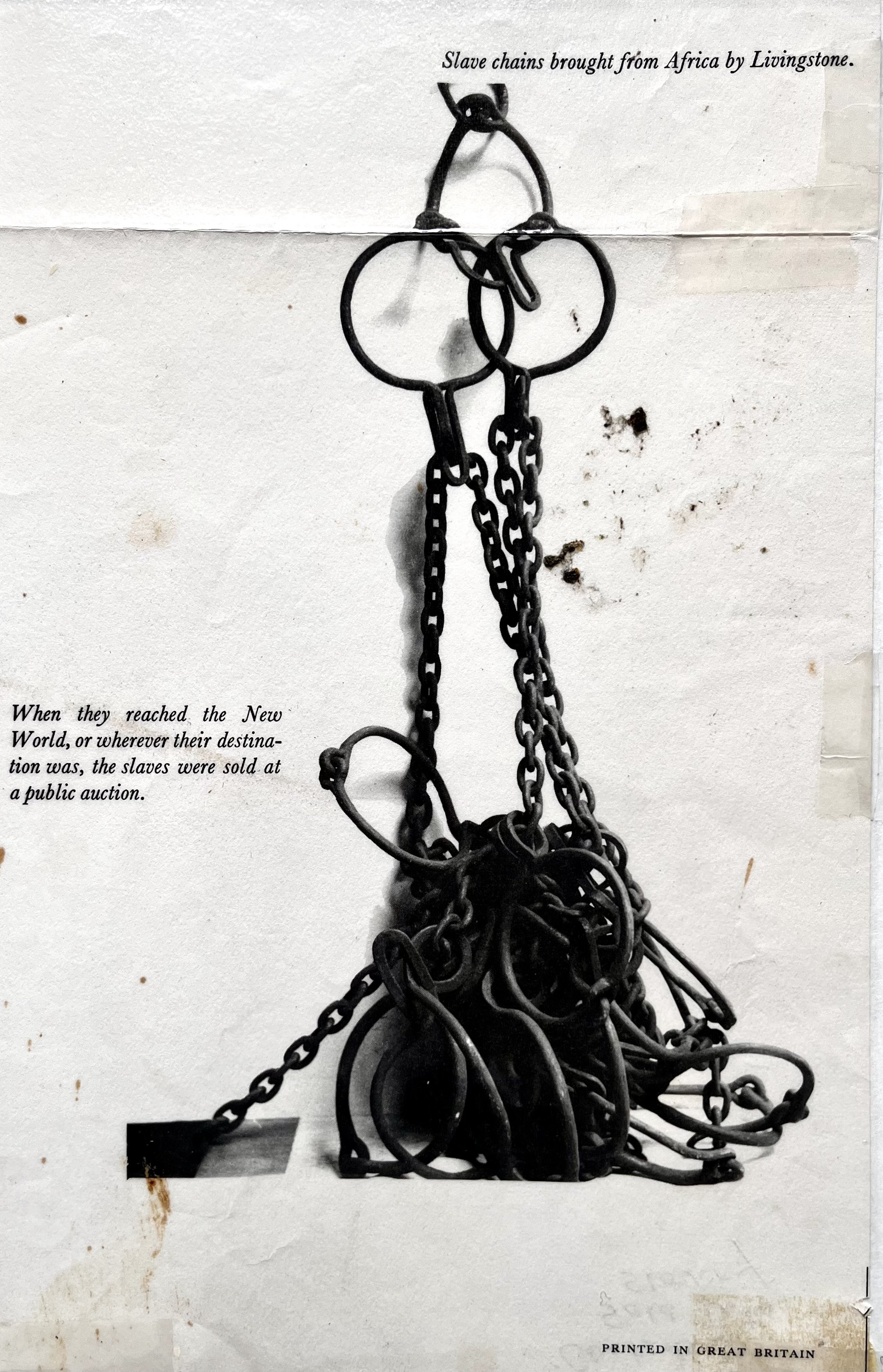

Article on the 50th Anniversary of the church November 1906.

Picture from the early 1900's outside our church
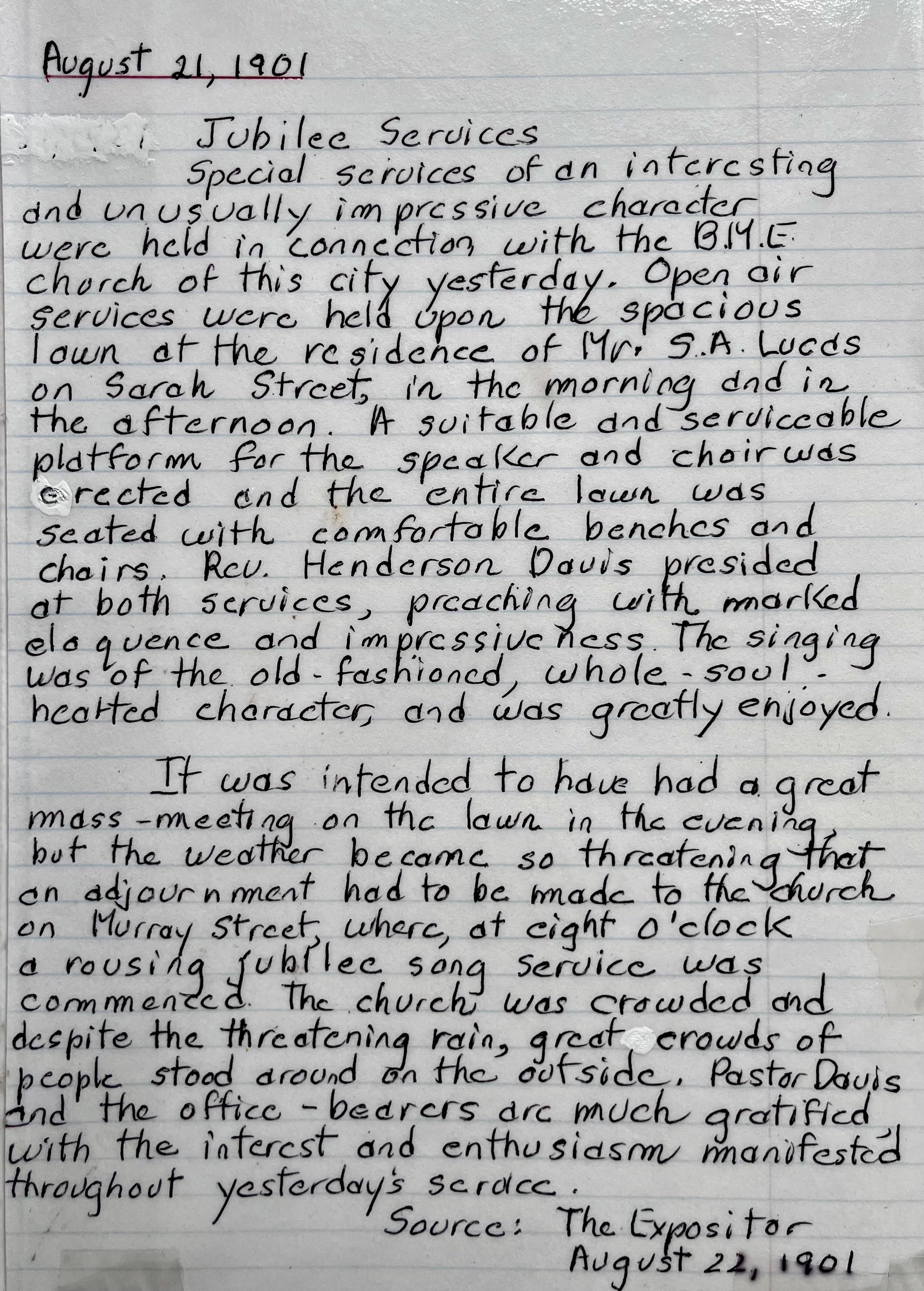
August 21st, 1901 Article transcribed

Note about Burning the Mortgage for the Church building in 1902

Article on African life in Brantford June 1907

Note about building the house at 167 Murray St in 1911

Article about 67 year old Charles Walker in 1907
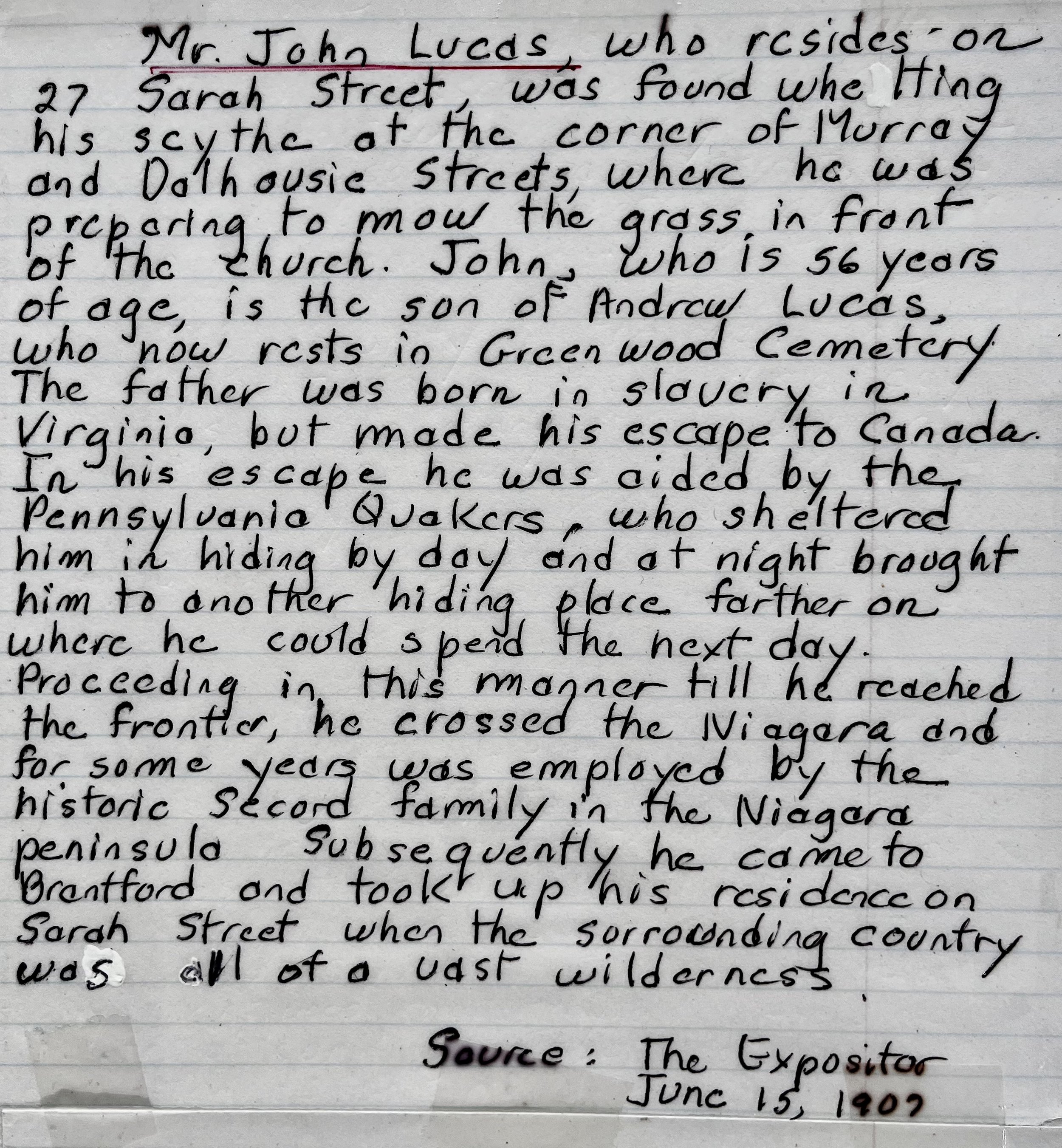
Article on former slave John Lucas in 1907 a resident of Sarah Street

Article from October 6, 2003 on a grand reopening of the church

Picture of the building in 2004
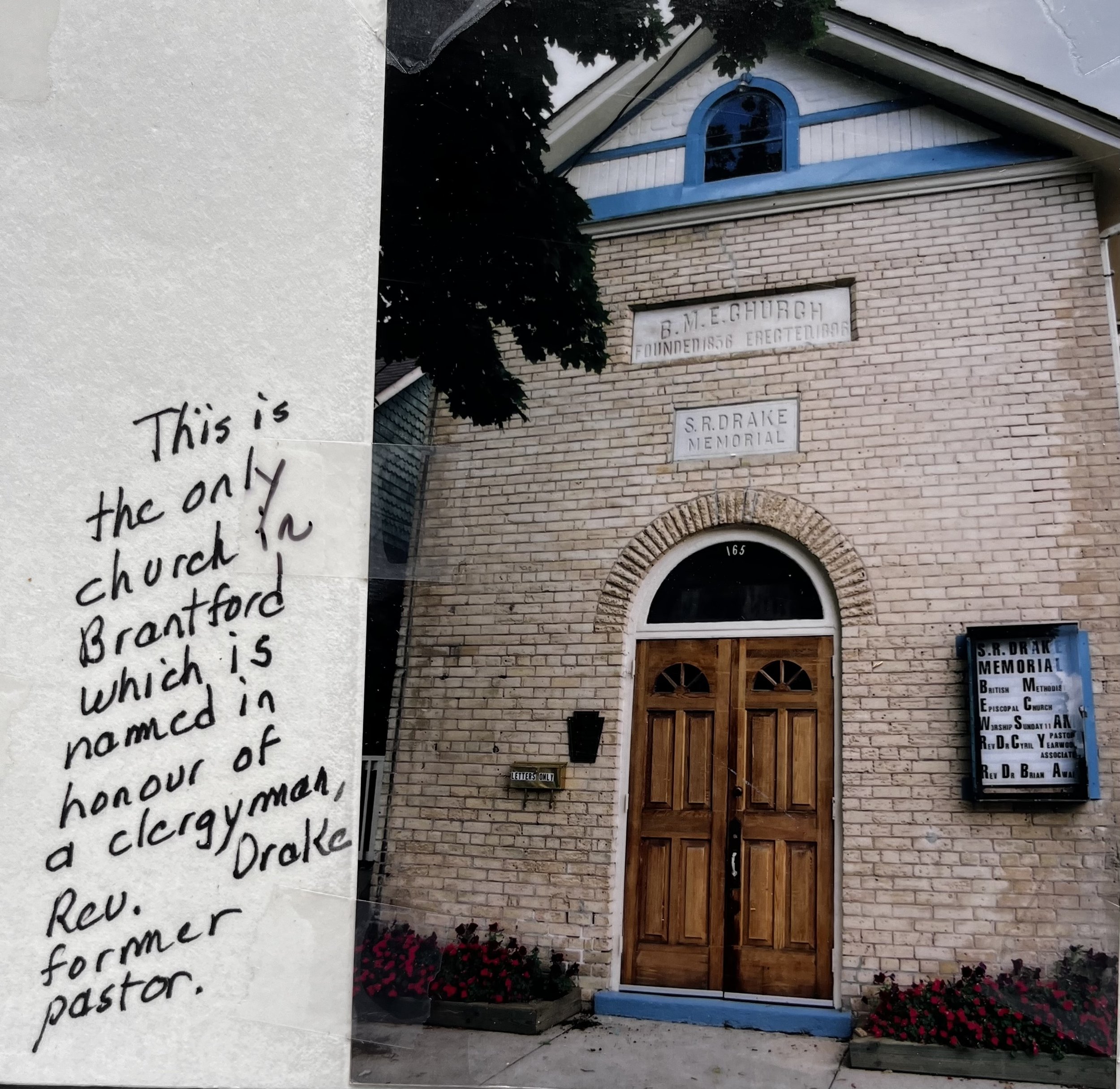
Another picture from 2004

Map from 1875 - the church building is circled
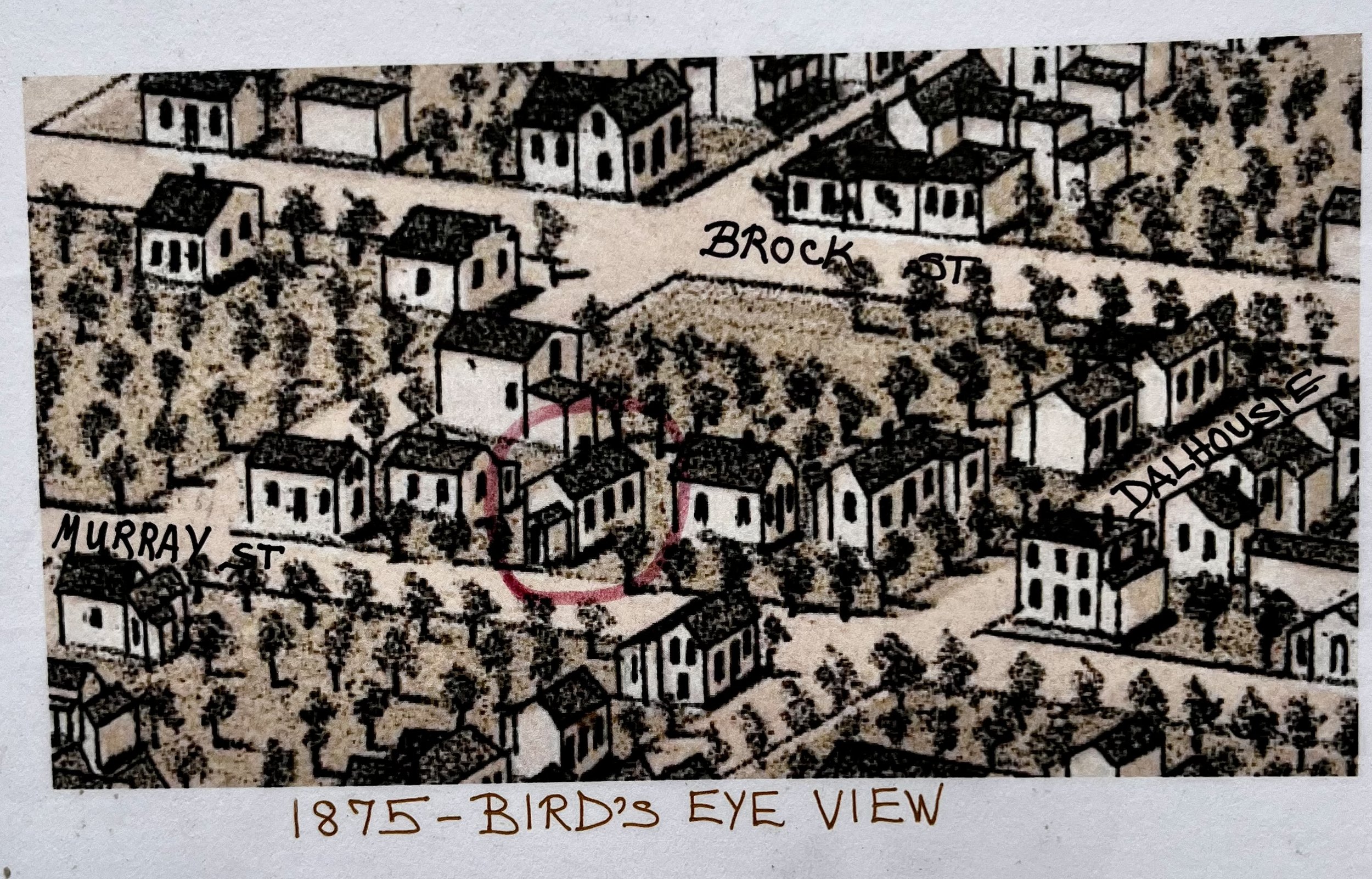
Where our church building is situated

Undated map showing slavery and sectionalism

Map showing where freed and escaped slaves moved to in Ontario
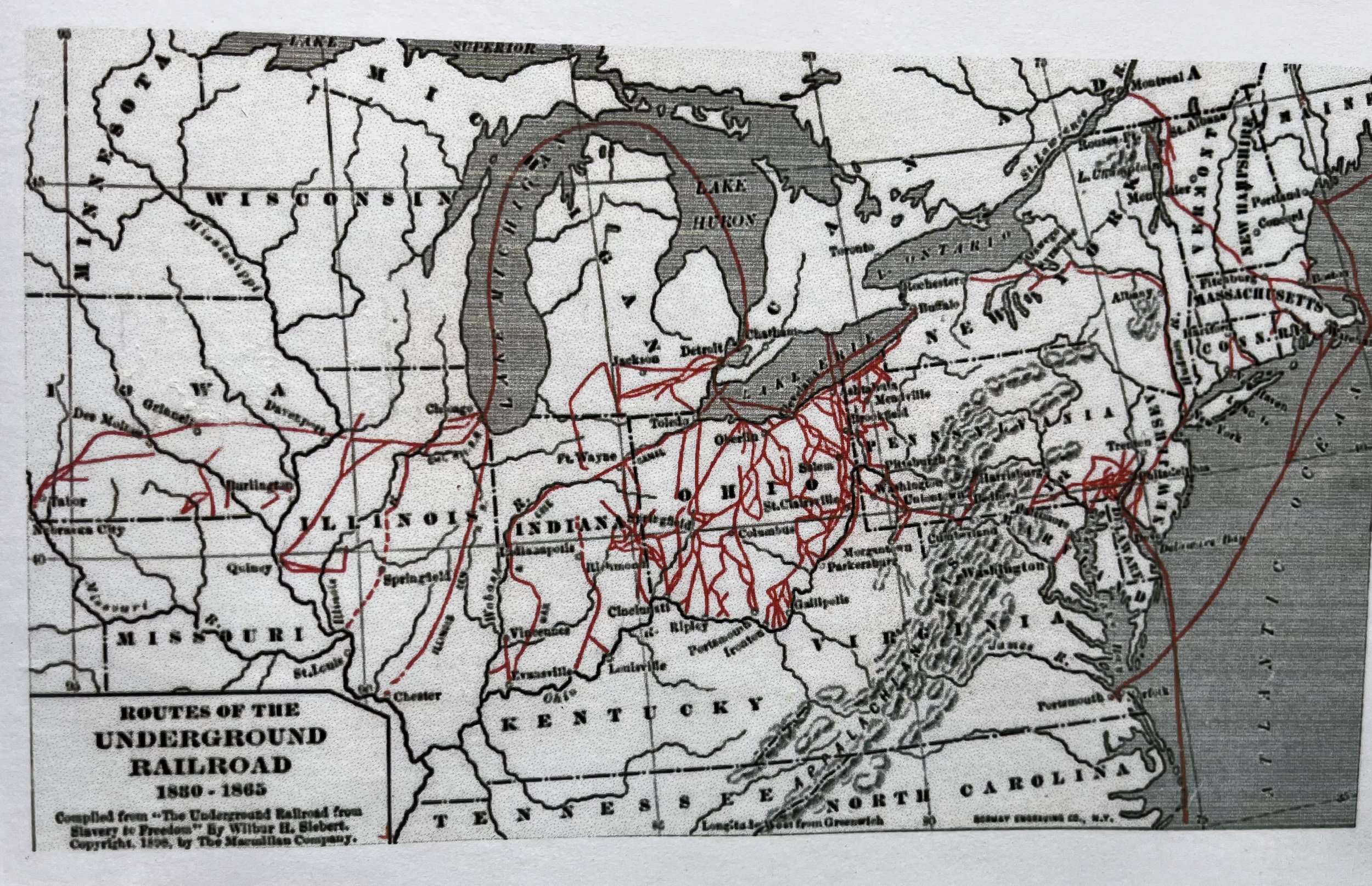
Underground Rail Road routes

History of spiritual songs




History of the church and building

Our history

Early 1900's - House and Church

Our Church - Brief History
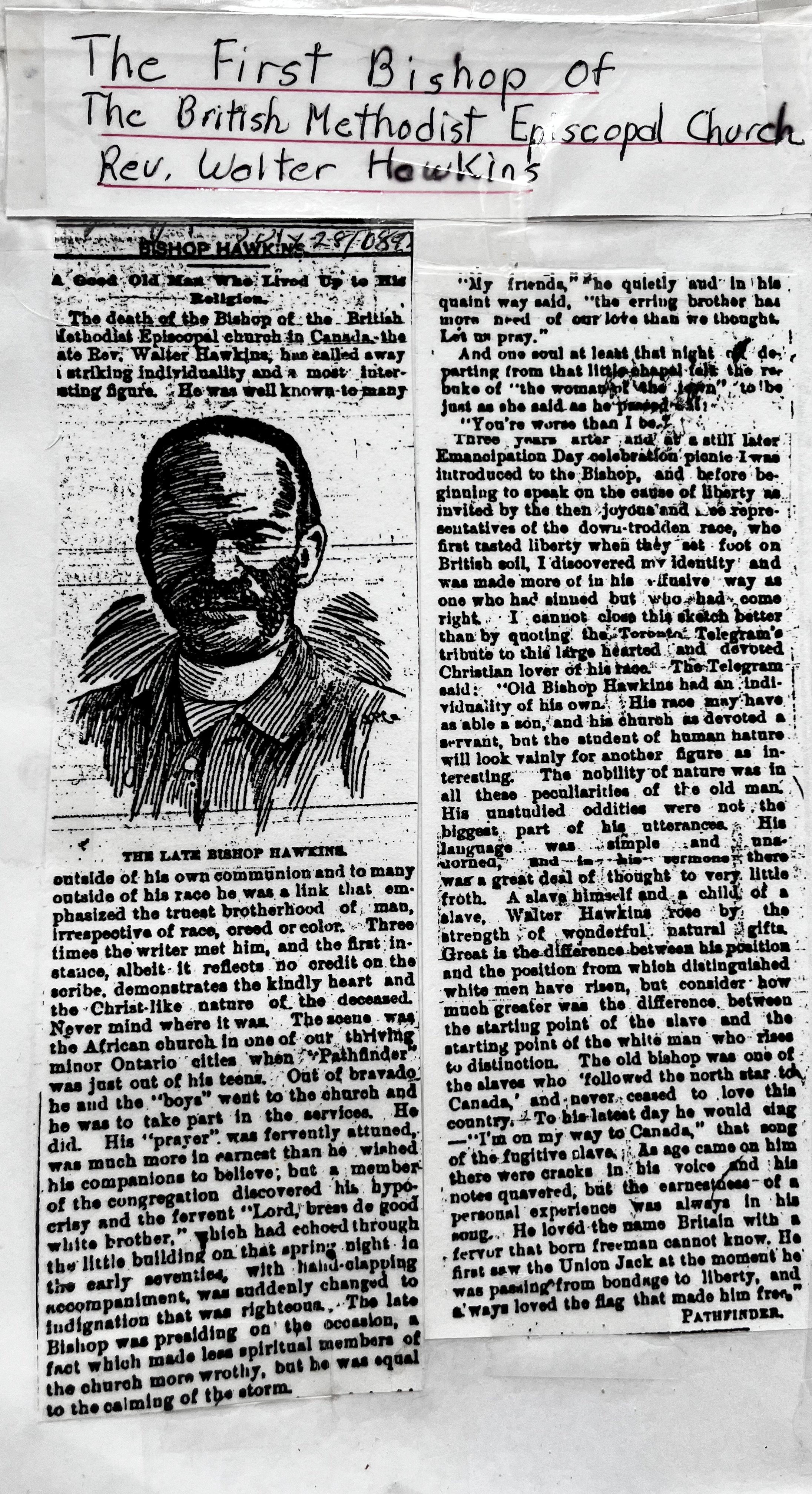
Our First Bishop
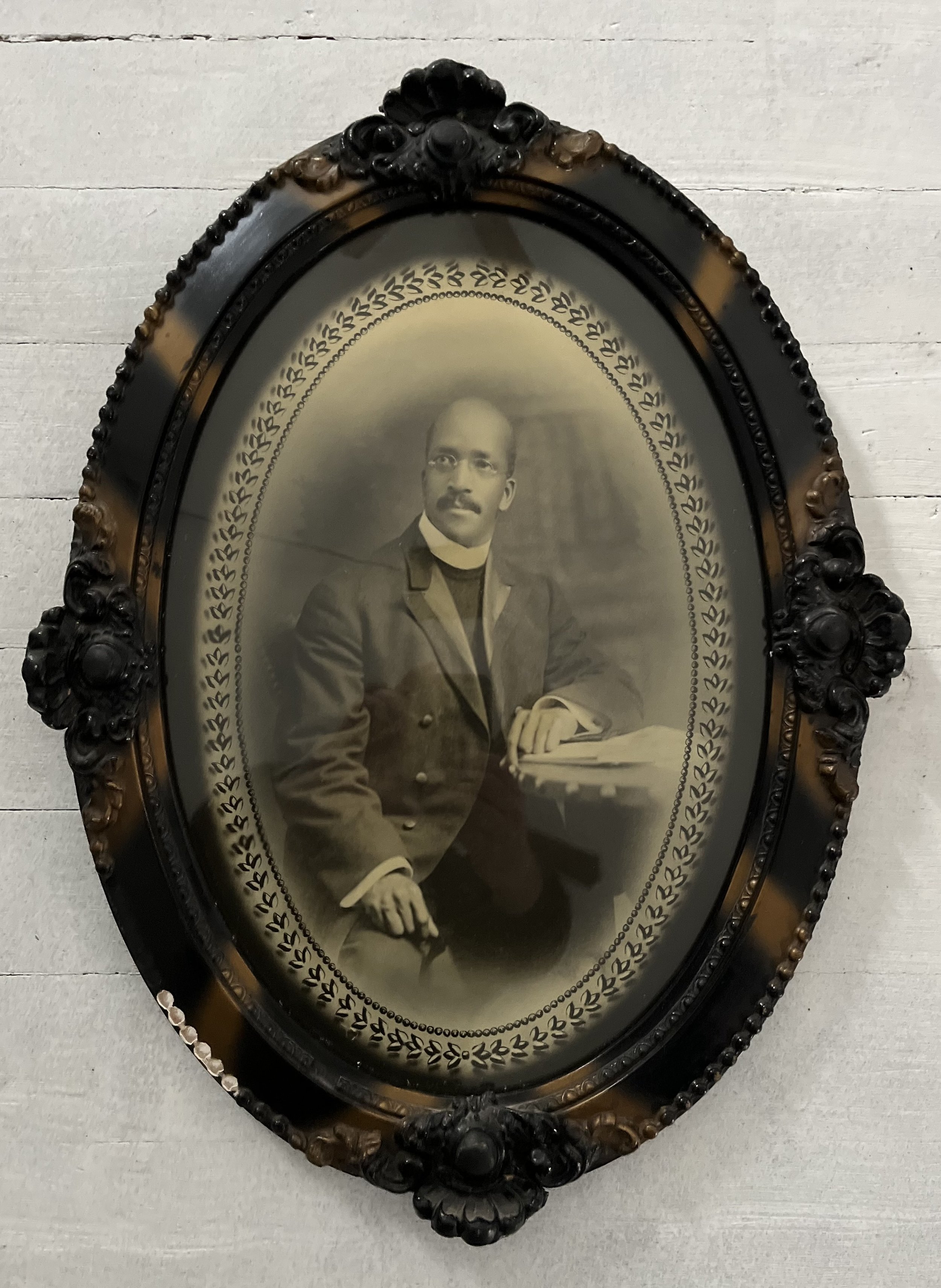
Samuel Richard Drake - who our building is named after
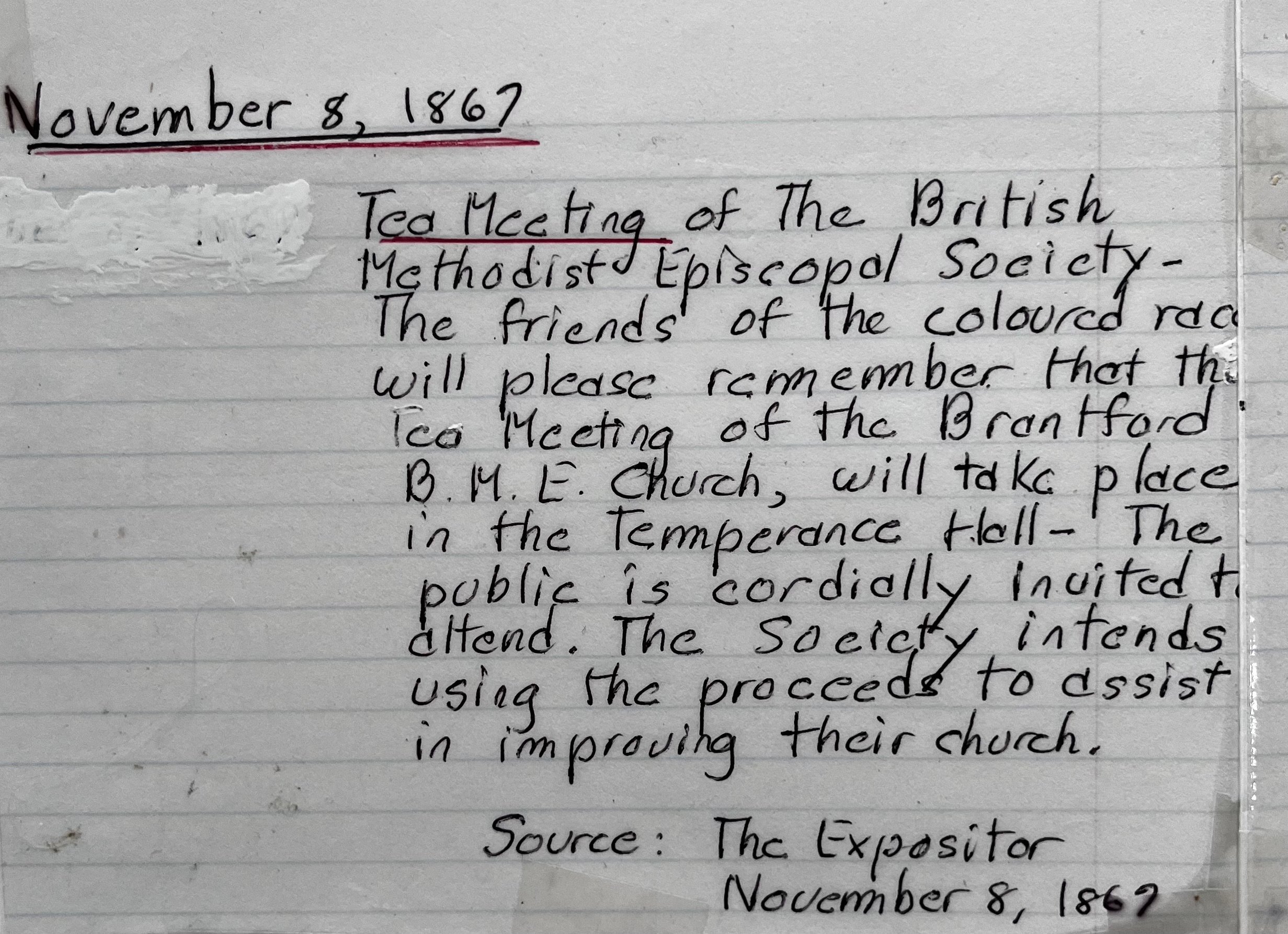
A note about the church the year Canada was founded

1876 article about night of entertainment

September 1896 article about the church building to be built

November 1896 article about the church building opening

November 1896 article about the church building opening
